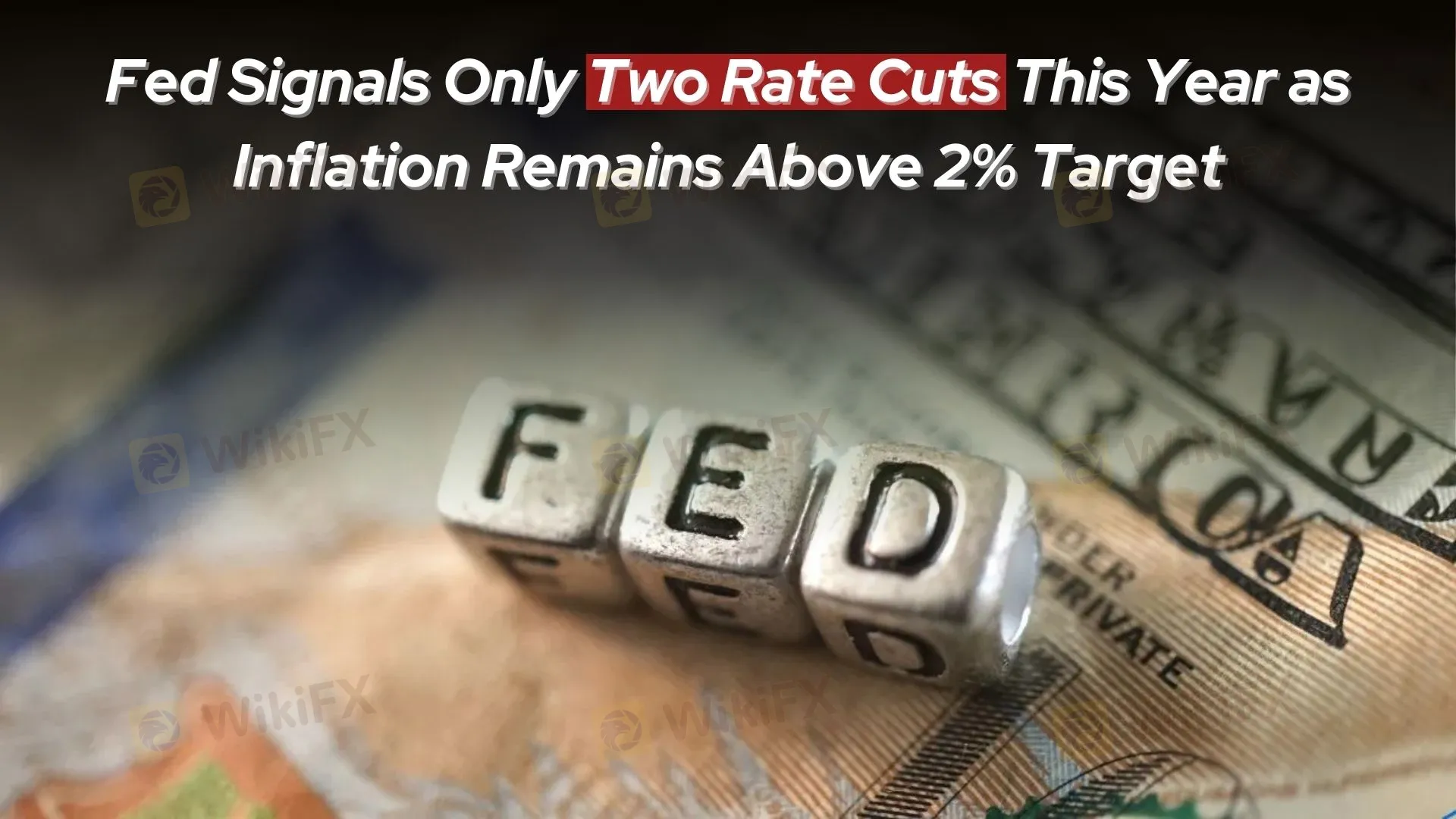简体中文
繁體中文
English
Pусский
日本語
ภาษาไทย
Tiếng Việt
Bahasa Indonesia
Español
हिन्दी
Filippiiniläinen
Français
Deutsch
Português
Türkçe
한국어
العربية
Fed Signals Only Two Rate Cuts This Year as Inflation Remains Above 2% Target
Abstract:The Federal Reserve prioritizes inflation control and economic stability, signaling limited rate cuts amid persistent price pressures.

Recently, statements from Federal Reserve officials have reignited discussions about the outlook for monetary policy. With U.S. inflation still exceeding the Feds 2% target, some officials have emphasized that, despite progress in easing price pressures, the conditions for rate cuts are not yet fully met. Against this backdrop, the Fed has hinted at only two 25-basis-point rate cuts this year, reflecting a cautious stance that has drawn widespread market attention.
Inflation Challenges and Policy Trade-offs
San Francisco Federal Reserve Bank President Mary Daly pointed out that while significant progress has been made in reducing inflation over the past two years, the current inflation level remains “uncomfortably high.” She stressed that the Feds primary goal is to bring inflation back to its 2% target, while executing policies thoughtfully to avoid excessive harm to the labor market.
Similarly, Richmond Fed President Thomas Barkin stated that the Federal Reserve needs clear economic signals before proceeding with rate cuts, such as inflation reaching the target or a significant weakening in demand. He noted that the labor market remains relatively healthy, and further slowing could destabilize the broader economy.
Rate Cut Outlook: Cautious but Flexible
Despite growing market expectations for rate cuts, Federal Reserve officials continue to express caution regarding the policy trajectory. Mary Daly emphasized that policy frameworks only provide a starting point for discussions, and actual policy adjustments must be informed by data and real-world economic conditions. She warned that premature rate cuts could reduce the Feds flexibility in dealing with future uncertainties.
Barkin echoed similar sentiments, reiterating the importance of achieving inflation targets. He highlighted how the rising U.S. Debt burden poses pressure on long-term interest rates, further underscoring the need for balance between fostering economic growth and controlling inflation.
Market Impact and Outlook
The Federal Reserve‘s indication of only two rate cuts this year has solidified expectations about the future path of monetary policy. While many anticipate policy easing later in the year, officials’ cautious tone suggests that the Fed will prioritize observing economic data before making further moves to avoid unnecessary economic disruptions.
With inflationary pressures still present and the labor market holding steady, the Fed‘s approach to rate cuts is likely to remain data-dependent. Over the coming months, critical economic indicators such as non-farm payroll data and the Consumer Price Index (CPI) will play a key role in shaping the Fed’s policy decisions. Market participants will need to closely monitor these data points to anticipate the Feds next steps.
Disclaimer:
The views in this article only represent the author's personal views, and do not constitute investment advice on this platform. This platform does not guarantee the accuracy, completeness and timeliness of the information in the article, and will not be liable for any loss caused by the use of or reliance on the information in the article.
Read more

Top Tips to Avoid Forex Margin Calls and Protect Your Capital
While technical indicators or chart patterns often capture the attention of forex traders, especially new ones, aspects such as margin requirements, equity, used margin, free margin, and margin levels are often overlooked. So, if you have received a margin call from your forex broker and are wondering how to deal with it, you probably do not know the concept of a forex margin call - what triggers it and how to avoid it. Being unaware of this concept can make you lose your hard-earned capital. In this article, we will provide you with all the information you need to know. Keep reading!

Top 5 Forex Trading Mistakes to Avoid
Posting impressive forex trading profits requires attention to detail and impeccable discipline. Jumping straight into trading without meaningful preparation can dent your hard-earned capital. Despite being a profitable investment avenue, some traders face mountains of losses owing to common forex trading mistakes they commit. In this article, we have discussed the forex mistakes to avoid. Read on and implement these lessons when trading.

Scalping vs Swing Trading: Which Forex Strategy Suits You Better?
Confused about which to choose between scalping and swing trading? The basic difference between the two is this - While scalping involves quick trades meant to earn small profits, usually within minutes, swing trading focuses on larger price movements over a few days or even weeks. Keeping this in mind, we have shared the definition of scalping and swing trading, their pros and cons, and other critical insights. Keep reading to learn about which is better - forex scalping vs swing trading.

What is NFP in Forex? An Insightful Guide for Traders
The Non-farm Payroll (NFP) report may be for the US. However, the report, which is issued every month, impacts the forex market globally. The monthly report estimates the number of jobs gained in the US in the previous month. The job numbers stated on this report exclude those of farms, private households, and non-profit organizations. Usually released on the first Friday of the month, the report also includes the US unemployment rate, average hourly earnings, and participation rate. In this article, we have answered the question - what is NFP in forex - and shared other pertinent details. Read on!
WikiFX Broker
Latest News
Private payrolls rose 42,000 in October, more than expected and countering labor market fears, ADP says
Yields Rise, Rate-Cut Odds Slide As ISM Services Survey Signal Inflation Fears
Op-ed: The fuel for the AI boom driving the markets is advertising. It is also an existential risk.
Stonefort Broker Review 2025: Legit or Risky? A Complete Analysis
He Thought It Was a Crypto Investment; It Cost Him RM1.2 Million
CHINA BEST Broker Review: Regulation and Risks
Uniglobe Markets Review 2025: A Safe Broker or a High-Risk Scam?
Chicago Fed's Goolsbee says he's cautious about further rate cuts during shutdown
These Are Europe's Top Economies By Projected 2026 GDP
Quantower Review 2025: User Reviews and Complaints in India
Currency Calculator




